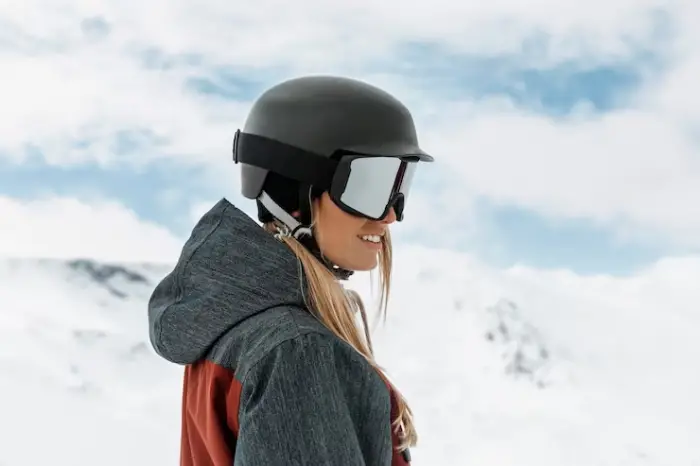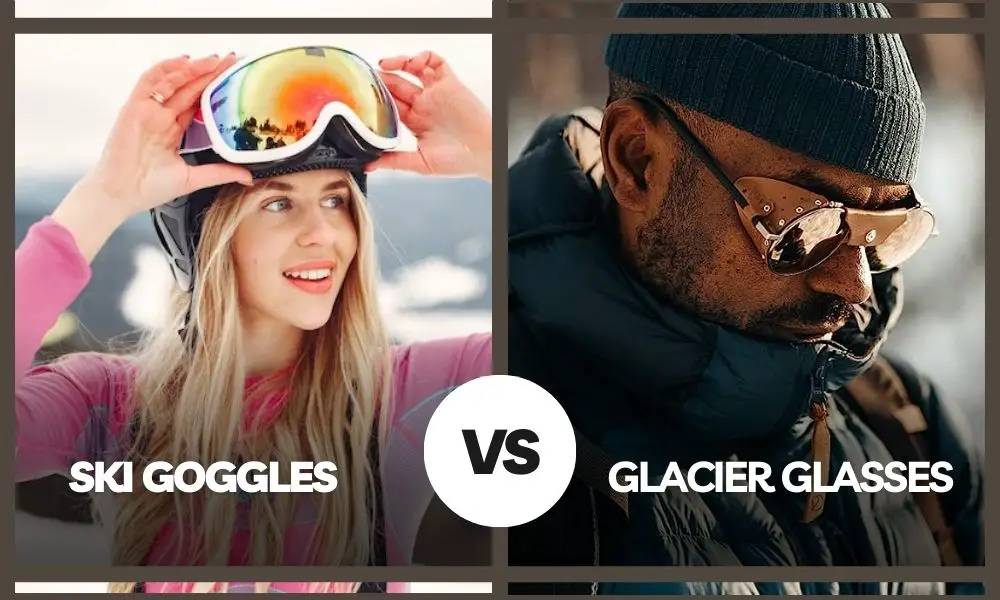Are you just like me who used to think that ski goggles and glacier glasses only are different by name? I hate to break it to you, but you were wrong.
They are not just different in terms of name but also in terms of functions. Since you are here to know which one will be suiting you the most, let us get into the article!
What Are The Differences Between Ski Goggles And Glacier Glasses?

Have you ever considered wearing ski goggles while driving to your office in the morning and being a subject of absolute ridicule in public? Nobody has, because it doesn’t make sense!
Just like the above example that contrasts ski goggles’ functions from the functions performed by sunglasses, you should also know that ski goggles and glacier glasses serve different purposes and are suited for different conditions. Just because they are eyewear doesn’t mean they will protect you anywhere!
There are many instances that make ski goggles different from glacier glasses. Let us have a look at them.
Purpose
Ski goggles’ main use is protection during skiing, snowboarding, and other winter sports. The protection includes preventing wind, snow, and UV rays from reaching the eyes. It also provides clear vision and prevents fogging that happens when warm air comes into contact with a cold surface.
Glacier glasses are designed for mountaineering, hiking, and other high-altitude activities. Their main function is to protect the eyes from intense sunlight, harmful UV rays, and the glare experienced in alpine environments because of reflected sunlight off the mountain surfaces.
Coverage

Ski goggles offer full coverage for the eyes and often extend to cover the nose. The structure is of goggles that seal your eyes completely to prevent snow and wind from entering the goggles and your eyes.
Glacier glasses typically have large wraparound lenses that offer ample coverage for the eyes and the surrounding areas. Some models may have side shields to block peripheral light.
Lens Technology
Ski goggles come with various specialized lens technologies that are very necessary while skiing and snowboarding. This includes anti-fog coatings, UV protection, and tint options to enhance visibility in various light conditions on the slopes.
Glacier glasses also feature high-quality lenses, but they do not always have the specialized coatings for anti-fogging that the ski goggles have necessitated.
Ventilation
Ski goggles have ventilation systems to prevent fogging by allowing airflow and reducing moisture buildup. Without this technology, you would not survive on the ice for even a minute!
Glacier glasses are designed to fit securely on the face but might not include a ventilation system. Though there are some models that have built-in ventilation to reduce fogging during strenuous activities.
Strap

Ski goggles have an adjustable strap that goes around the head to keep them securely in place, even during high-speed activities.
Glacier glasses often come with a detachable cord or strap that can be secured around the neck to prevent loss.
Now you know that they are not the same eyewear you thought them to be. Moreover, both types of eyewear serve the specific interests of different people. It’s crucial to choose whether you need ski goggles or glacier glasses based on the specific conditions and requirements of the activity you’ll be engaging in.
What Conditions Are Proper For Ski Goggles And Glacier Glasses?

We all are aware that both these eyewear are used in icy conditions when the sun also shines brightly. The intensity of sunlight generally heightens at higher altitudes because of the thinner altitudes. Both ski goggles and glacier glasses share a common link here and offer essential protection in such conditions.
There are distinct characteristics for sure because they are very different from each other, I hope you have caught onto that by now. Ski goggles are designed for winter sports like skiing and snowboarding, offering anti-fog coatings, and ventilation.
Glacier glasses, on the other hand, are tailored for mountaineering and high-altitude activities, providing large wraparound lenses, UV protection, and glare reduction to counter intense sunlight and reflection on snowy or icy terrain.
Conclusion
So if you are interested in hiking in icy environments and mountaineering activities as such which are done in high altitude spaces then you better not take any risk and choose the glacier glasses. Goggles are not going to help you at such heights because they are primarily made for icy terrains which are not at a large height.
If you wear goggles to high altitude places, it can affect your breathing which is crucial while climbing. Remember the structure of goggles? They form a perfect seal around the nose as well. The seal does not suffocate you when in less altitude places, but when you are at a height where the oxygen is low, it could.
So always prioritize your safety and ensure you follow the precautions carefully.

